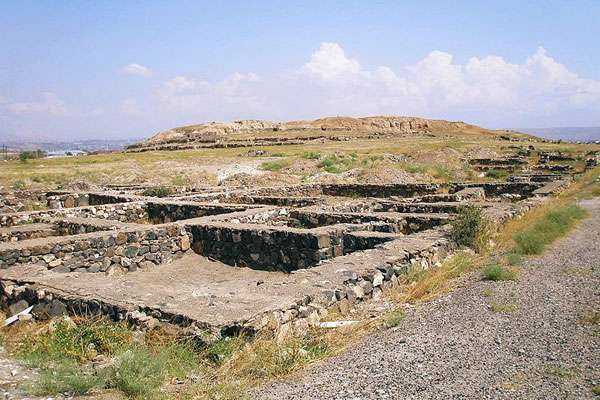One of the pivotal monuments of the Early Bronze Age

Hakob Simonyan
One of the pivotal monuments of the Early Bronze Age in the Armenian Highland – Shengavit site is situated in Yerevan. It occupied an area of more than 6 hectares. Shengavit was founded in the IV millennium BC, and it continued to function over a thousand years. The excavations carried out in 1936-1938, 1958-1983, 2000-2012 (headed by E. Bayburtyan, S. Sardaryan, H. Simonyan and M. Rothman) shed light on several questions concerning the archaeological site: Architecture, Beliefs, Art, Applied Arts, dating and other spheres.
The fact of being surrounded with satelite towns, the density of buildings, and the population, the complicated picture of urbanization – monumental constructions (defense walls fortified with towers), dwellings and various sanctuaries and worship buildings with round and rectangular layouts, the symbols of power, the existense of the class of skillful craftsmen, developed craftsmanship, particularly metalwork, luxurious samples of ardornments made of gold and semi-precious stones, great number of storing pits for wheat and other foods, the common weight system, the primitive money from seashells and the class of traders, the ampleness of art and cult objects, the developed religeous system and other attributes speak of the deep social devision of Shengavit society. These attributes are typical to the societies in their process of transmitting from the early agricultural economic structure to the developed state structure, the so called “early systematized society”. Besides, compared with a number of ancient
cultures (Tripoli, Maykop, etc.) Shengavit culture shows many attributes typical to early state societies, providing the development of the society, which corresponds to the conception of “early town”.
Based on the archaeological excavations and study of the building horisons we can state that the primary types of “early grave-tombs”, ceramics, as well as some culture-creating elements in decoration peculiar to such cultures as Bedenean, Trialety-Vanadzor, Karmir-berd and Sevan-Artsakh, sprang out from the “crater” of Shengavit culture. Thus, we came to the conclusion that the culture of the Middle Bronze Age in Armenia arosefrom the Early Bronze Age in the depth of Shengavit culture and spread gradually far and wide including the entire South Caucasus, reaching up to the big range of the Caucasus Mountains.